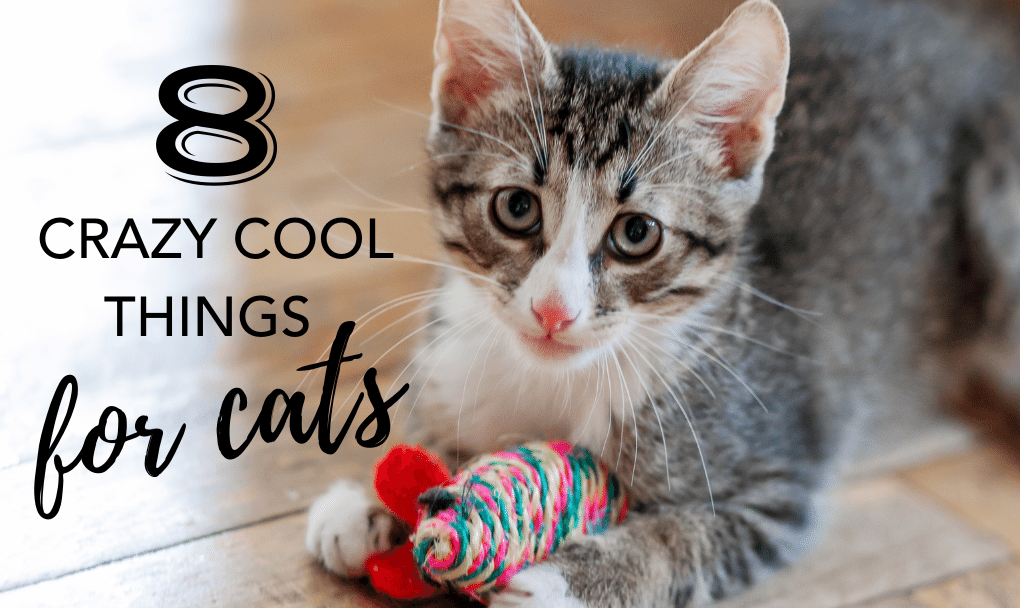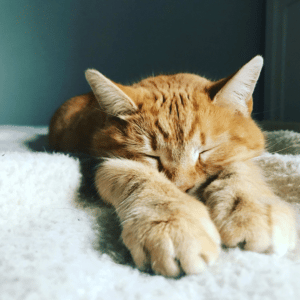38 Houseplants Safe for Cats
Cats and plants can make a house feel like a home. But if you have both, you know they don’t always make a great mix.
Curious kitties seem drawn to certain houseplants like leafy green magnets. Sometimes, they’ll have wolfed down a distressing amount of greenery before you come along and shoo them away, leaving you to fret about whether what they just ate is going to make them sick or necessitate a costly trip to the emergency animal clinic.
Fret no longer. This primer on houseplants safe for cats will help you determine which types of botanicals are okay for your feline friend to interact with and which aren’t, information that will keep them healthy and make sure both of you stay happy.
What Makes a Houseplant Safe for Cats?
Many pet owners are under the impression that the danger posed by a particular plant comes down to whether or not it’s toxic. And that’s true—there are lots of plants containing natural compounds that in large enough quantities can be bad for your kitty’s health.
“Toxic” plants are better understood as those with properties that are poisonous to cats. They may be considered generally safe to have around the house but produce negative effects in felines that happen to give them an inquisitive nibble. A few common examples include lilies, azaleas, tulips, hyacinths, pothos, and Elephant’s Ear.
If you’re surprised to see some of those literal garden species on the no-fly list, you’re not alone. Cat owners who are new to plants (and vice versa) are almost always shocked when they learn that the vast majority of the plants frequently found in indoor settings are detrimental to creatures with four legs and a tail.
When ingested, these sorts of plants can cause symptoms like:
- Vomiting
- Diarrhea
- Irritation of the mouth, lips, or tongue
- Difficulty swallowing or breathing
- Excessive fatigue
- Uncontrollable drooling
- Noticeable dizziness or disorientation
- Changes in eating or bathroom habits
- Coma
- Multiple organ failure or death, in severe cases
Non-toxic plants, on the other hand, are those that don’t contain substances that are harmful to cats—they’re free of alkaloids, saponins, grayanotoxins, bufadienolides, and other hard-to-pronounce things that can make cats sick or worse. These are the plants that responsible pet owners can feel good about growing, even with peckish pusses on the prowl.
Unfortunately, it isn’t always a simple toxic-or-not distinction. There are quite a few plants that aren’t technically classified as toxic but can nonetheless result in an unpleasant experience for your cat if it manages to get a hold of a little too much. Bamboo and Spider Plants are such plants, but there are many, many more.
It’s no wonder that this can be such a confusing subject.
Be sure to check out the ASPCA’s master list of poisonous plants. The organization has done a tremendous job highlighting hundreds of species that cat owners will be well-advised to steer clear of and helpful to find additional houseplants safe for cats.
Houseplants That Cats Can Eat
If you frequently catch your cat chowing down on your plants, a couple spritzes from the spray bottle may not do much to discourage it. Instead, try treating it to one of these tasty, veterinarian-approved houseplants safe for cats, which it can munch to its heart’s content without any undesirable consequences:



Catnip (also known as catmint, catwort, and catswort) – The quintessential green cat snack, catnip has strong attractant qualities that make kitties go crazy.
Cat Grass – Typically grown from wheat, barley, rye, oat, or alfalfa seeds, cat grass can give your cat a bit of beneficial fiber and help its digestion.
Cat Thyme – Teucrium marum, more commonly known as “cat thyme,” isn’t actually thyme but a fragrant perennial plant that affects cats similarly to catnip.
Herbs – Many of the herbs that humans use to season their food, such as cilantro, dandelion, rosemary, sage, and thyme, are also quite delectable to cats.



Silver Vine – Another alternative to catnip, Silver Vine is the colloquial name for a species of kiwi that’s notable for its large, silvery leaves.
Spider Plants – With their long, spiky, tender leaves, Spider Plants are a lot of fun for felines to nuzzle, chew, and bat around. Be warned, however, that although the ASPCA classifies them as a non-toxic species, they can still give your cat an upset stomach if eaten.
Valerian – Valerian is yet another benign plant that produces feelings of euphoria in cats, much like catnip, cat thyme, and Silver Vine.
You’ll find most of these houseplants safe for cats at your local pet store, where they’ll be on display alongside the edible treats or hairball control solutions.
Non-Toxic Houseplants Safe for Cats
Just because some plants are disagreeable to cats doesn’t mean you have to sacrifice one or the other. The following genera and species have been studied extensively and deemed houseplants safe for cats in living spaces that are home to one or more purr machines:



- Air plants
- African Violet
- Areca Palm
- Baby Tears
- Bamboo Palm
- Banana Tree



- Blue Echeveria
- Boston Fern
- Bromeliads
- Burro’s Tail
- Calathea
- Cape Marigold



- Cast Iron Plant
- Christmas Cactus
- Friendship Plant
- Gloxinia
- Haworthia
- Money Tree



- Mosaic Plant
- Orchids
- Parlor Palm
- Peperomia (Baby Rubber Plant)
- Peperomia Green
- Polka Dot Plant
- Ponytail Palm
- Prayer Plant
- Purple Waffle Plant


- Rattlesnake Plant (calathea lancifolia)
- Royal Velvet Plant
- Swedish Ivy
- Venus Fly Trap
This will no doubt come as good news to you if you have a green thumb, as many of the aforementioned plants are among those most sought-after by indoor horticulture enthusiasts.
Looking for a great place to plant your houseplant safe for cats check out our round-up of 11 adorable cat planters!
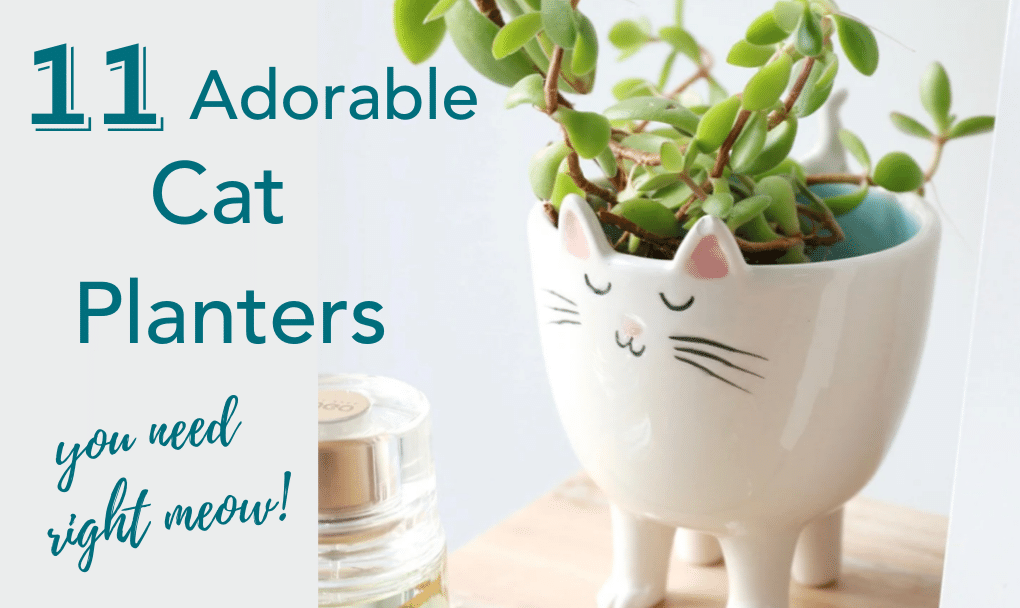
Tips for Keeping Plants Safe From Cats
Any plant—even those houseplants safe for cats that are non-toxic—can make your cat sick if they eat too much of it. And, conversely, a curious kitty can do some serious damage to a carefully cultivated houseplant. It’s, therefore, a good idea to know how to keep ‘em separated.
Before you introduce a new kitten or plant to your home, heed these tips to help ensure that your living space remains harmonious and hazard-free.

Choose Containers That Aren’t Easily Upended
If you have a mischievous cat that’s fond of knocking things over just to see what happens, secure your houseplant safe for cats by repotting them in heavy containers with wide bases that aren’t so easy to topple.
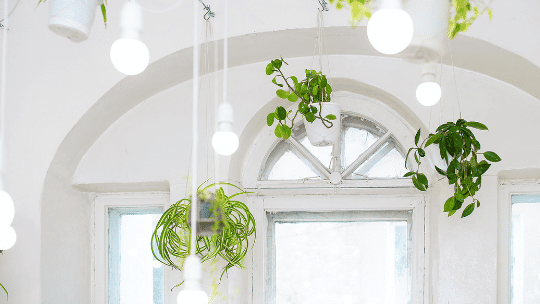
Get Your Prized Specimens Out of Dodge
Place any houseplants safe for cats you want to protect on high shelves or narrow nooks that will be difficult or impossible for your cat to access. Better yet, hang them up someplace where they’ll be safe from clutching claws and free up valuable floor and shelf space at the same time.
Hanging your plants is probably the single best way to keep probing paws at bay.
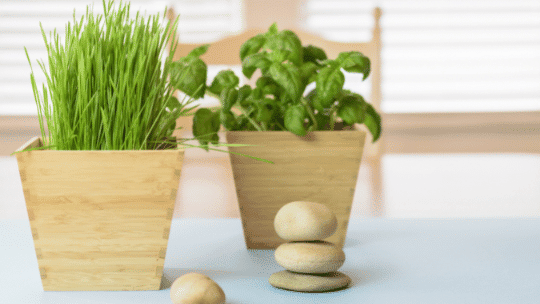
Ditch the Breakables
This one is also strongly recommended for cats that love causing casual mayhem: make the switch from fragile materials like glass, ceramic, and terra cotta to more resilient ones like wood, metal, or plastic. The latter won’t shatter and potentially injure your kitty, your loved ones, or yourself.
If you want to score some bonus points, consider going green with eco-friendly materials like cardboard and recycled plant fiber that are better for the environment.

Think Inside of the Box
Say goodbye to boring, unremarkable pots and hello to the greenhouse, terrarium, cage, or dome-style containers that are roomy enough to hold multiple plants at once. Not only are these effective for keeping your vulnerable houseplants off-limits, but they’ll also lend an eye-catching element of the interesting and unusual to your living space.

Cover Large Plants So They Don’t Become Litter Boxes
If you’ve recently made the disheartening discovery that your cat has been using one of your favorite houseplants to do their business (we feel for you), pile the soil with a thin layer of small rocks or secure a sheet of wire mesh over the opening of the container. Just be sure to leave plenty of breathing room for the plant itself.
Armor Your Air Plants
To prevent your air plants from looking like fresh lawn clippings, house them in containers that will keep them partially or mostly enclosed.
This is a great opportunity to take a creative approach to your indoor gardening practices—things like fishbowls, mason jars, repurposed light bulbs, miniature wrought-iron cages, sea urchin shells, and hollowed-out salvaged wood are all fair game.
Mist Appetizing Plants With Bitter Apple Spray
Bitter Apple Spray is an anti-chewing agent traditionally formulated with apple cider vinegar, isopropanol, and a slew of other naturally bitter extracts and essences. Its tart, bitter taste can make cats think twice about chomping on a plant they shouldn’t be messing with.
You can buy Bitter Apple Spray at any major pet supply shop, as well as many supermarkets and convenience stores. It’s made entirely from organic, non-toxic ingredients and is 100% safe to use in your home.
Leave the Plants to Mother Nature
If you have a floor plan that makes locking down your plants a hopeless prospect, you may have no choice but to reserve them to their natural habitat—the great outdoors—to safeguard them from an ungovernable indoor cat.
Before you get too bummed out, just think about all the time you stand to save watering, fertilizing, and shifting pots around constantly to take advantage of optimal light conditions.
What to Do If Your Cat Has Eaten a Toxic Plant
Despite your best efforts, it’s still possible for your cat to get into a plant with poisonous properties. When this happens, it’s crucial to maintain a cool head and act quickly to get your companion the help it needs.
Isolate the Threat
Move the offending plant to an out-of-reach spot, such as a high shelf. If you don’t have anywhere else to put it, shut it up in a bathroom, cabinet, pantry, or outdoor shed.
This step is especially important if you have multiple cats at home. The last thing you want is to turn your back on a half-eaten toxic plant for a few moments only to find one of your other fur babies making a snack out of it when it’s back in your sights.
Make a Note of the Date and Time
Write down the day’s date, then take a look at the clock and jot down the exact time, too. This information will be hugely helpful to your vet later on.
Keep in mind that reactions to plant poisoning aren’t always immediate. It could take hours or even days for your cat to begin exhibiting symptoms, and by then you may no longer have a clear memory of when the initial event occurred.
Check for Signs of a Potential Reaction
Examine your cat for outward indications of poisoning. Tell-tale symptoms include redness, irritation, or blistering around the mouth, lips, gums, and tongue, excessive drooling, vomiting, diarrhea, and other gastrointestinal problems. Wheezing, sneezing, and watery eyes may also be evidence of an adverse response.
If you notice any of these symptoms, pick up the phone and call your vet right away.
Take Your Cat to the Vet ASAP
Don’t start Googling home remedies or wait around to see if the situation will improve on its own. Grab your pet carrier and book it to the vet’s office or a nearby emergency animal care clinic.
Only a qualified veterinary specialist should be trusted to provide a diagnosis and administer treatment if poisoning is confirmed as the cause of your cat’s symptoms.
It may turn out to be a false alarm, but it’s always better to know for sure. When it comes to your beloved pet, you don’t want to take any unnecessary chances.
Wrap-Up
Caring for a cat or temperamental houseplant can be enough to keep your hands full in its own right. Caring for both of them under the same roof is practically a full-time job. Still, it can be managed with solid judgment and a little vigilance.
By making it a point to educate yourself on houseplants safe for cats and being selective about the plants you bring into your home, you can plant-proof your cats, cat-proof your plants, and enjoy the peace of mind that comes with knowing that both are safe and sound.
For more cool cat content like 38 Houseplants safe for cats, check out our other cat-riffic posts



